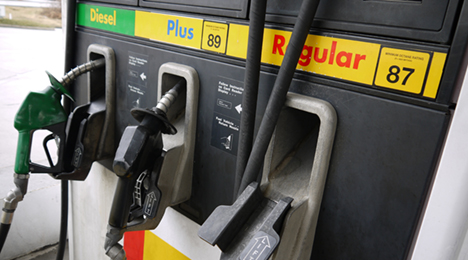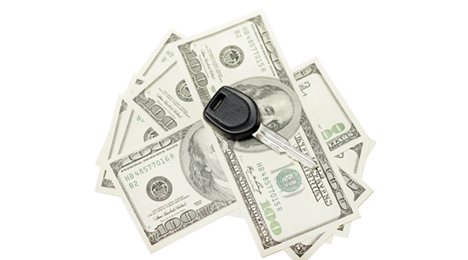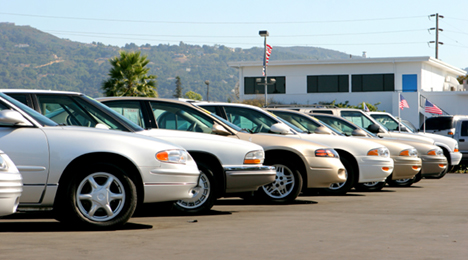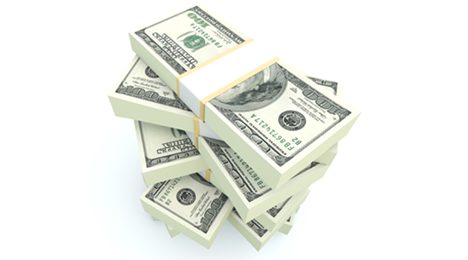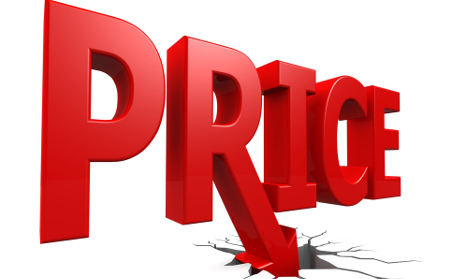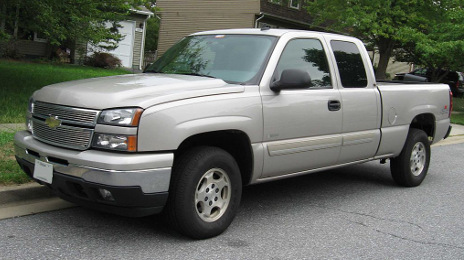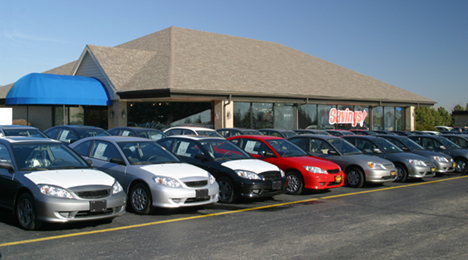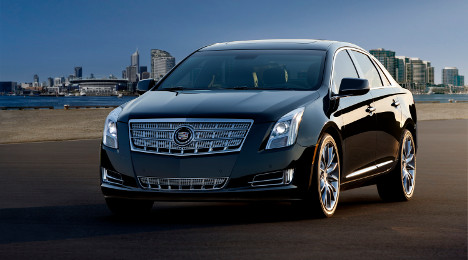Last week, gas prices dropped for the seventh week in a row, and some of the more fuel-efficient segments are following suit at the auction.
Prices at the pump dropped to a national average of $3.47 per gallon last week, and Black Book’s Ricky Beggs pointed out the three smaller, more fuel-efficient segments saw the largest percentage declines among the car segments.
Traditionally, lower gas prices — which sit $0.08 lower than the same period last year — are linked to softer auction price trends among the more fuel efficient rides.
In the editorial director’s latest “Beggs on the Used Car Market” video report, he reported the entry level segment saw the biggest price drop among cars last week, as they fell by 1.62 percent.
And the compact cars and entry mid-size cars followed with 0.65-percent price drops each.
Interestingly, these three segments saw some of the strongest price retention in the lanes this past spring.
“During the latter half of the year they are now catching up to their expected overall annual depreciation. In relation to current gas price trending, the demand for these more fuel efficient used models is not at the forefront,” Beggs said.
The larger vehicles seemed to be holding their price lines a bit better than smaller units, as the trucks experienced smaller overall price declines last week than the previous week.
There was only one segment that saw a weekly decline greater than 0.5 percent, Beggs pointed out — the cargo minivans with a drop of 0.91 percent.
On the other hand, the full-size passenger wagons saw the best price retention among the truck segments last week with a slight drop of $1.
“This full-size van segment is showing positive strength, we feel due to the almost total revamping of the type of vehicles in this segment. It is far from being just a refresher,” Beggs said. “Due to this change and the introduction of models like the Promaster, the Transit and the Sprinter, the last of the traditional full-size vans have brought renewed interest and thus higher used values in this segment.”
To view the latest “Beggs on the Used Car Market” video, see above.
Is a sharp correction in used-vehicle prices imminent? The National Automobile Dealers Association expects used-vehicle prices will indeed start to fall — but gradually, not all at once.
After the Great Recession, a sharp decrease in new-vehicle sales greatly reduced the supply of late-model used vehicles. At the same time, price-conscious consumers opted for more affordable used vehicles rather than new vehicles. These two factors helped lift used-vehicle prices by 17% from 2007 to 2013, according to NADA. Prices have grown another 2 percent so far this year to an all-time high of $16,560.
Now, an improving economy and increased employment have brought new-vehicle sales back up to pre-recession levels, which in turn has increased the supply of late-model used vehicles. Ultimately the additional volume of used vehicles and an increasingly competitive new-vehicle market — both in terms of pricing and consumer demand — will decrease used-vehicle prices.
But there are many reasons why such a correction in used-vehicle prices will happen gradually. First, while the used-vehicle supply is recovering, it’s being done at a steady pace. This means that associated pressure will also come into play incrementally over time and not in one massive wave.
Second, economic growth and an improving employment situation will unlock demand for both new- and used-vehicle buyers. Certainly, a stronger financial position will continue to see many consumers shift back to the new-vehicle market. But it will also support demand for used vehicles — particularly among hourly-wage and part-time workers.
Third, the used-car landscape is dramatically different today than it was in 2007. Dealerships have bolstered the used-vehicle world with increased staff, advertising, software and infrastructure all designed to make the used-vehicle department as much a part of the business as the new-vehicle department. (Large dealer groups like Sonic and Asbury are even opening standalone used-car dealerships.)
True, this is partly based on the lack of new-vehicle demand during the financial crisis, but there is also a much longer, more stable trend underlying this as well: the dramatic increase in the quality and reliability of vehicles — coupled with the success of manufacturer certified pre-owned programs — has blurred the lines between a new vehicle and a used vehicle in the minds of consumers.
All these factors greatly reduce the risk of an impending collapse in used-vehicle prices. To be sure, automaker actions will play a key role in determining how far prices will fall in the coming years. The current level of incentive spending is as high as it’s been since 2010. With North American production scheduled to increase 9 percent through 2017, this raises the potential for incentive spending to grow even further if new-vehicle sales don’t live up to expectations.
But while incentives likely will continue to rise, NADA doesn’t expect spending (and cash discounts in particular, or the form of incentive with the most direct and immediate impact on used-vehicle prices) to return to the destructive levels of the last decade — at least in the near-term.
Taking current market trends into consideration, NADA expects used-vehicle prices to finish the year roughly on par with 2013, before dropping by 3.5 percent to 4 percent in 2015 and 2016. Notable, yes, but even with the cumulative 8-percent decline factored in, prices will still be well above levels recorded in the decade and half leading up to the last recession.
Jonathan Banks is executive automotive analyst for the NADA Used Car Guide. Banks will be one of the speakers at the National Remarketing Conference, which is part of the Used Car Week conference series that runs from Nov. 10 through Nov. 14 at the Red Rock Casino, Resort and Spa in Las Vegas. More details, including agendas and registration information, can be found at www.usedcarweek.biz.
While beating year-ago numbers, used vehicles didn’t fetch as much money in the wholesale market during July as they did in June.
And while the year-over-year decline in July’s retail used-car sales played a role in pushing down these wholesale prices, another factor affecting used values appears to a positive for dealers.
In his latest monthly report to explain wholesale price changes, ADESA Analytical Services chief economist Tom Kontos said that there was an increase in the number off-lease and off-rental units flowing into upstream and physical auction channels.
That, plus additional trade-ins sparked by strong new-car sales, led to a boost in supply. And that’s not all, Kontos said.
“Growing auction inventories are also exerting downward pressure on wholesale prices,” he said in the Kontos Kommentary report released this week.
All told, July wholesale prices came in at an average of $9,743, according to the analysis from ADESA Analytical Services. This marked a 2.2-percent decrease from June and a 3.3-percent rise from July 2013.
All but one segment — mid/full-size CUVs, whose prices were static — saw a month-over-month decrease in wholesale values.
“Minivans and mini SUVs were particularly hard-hit, with month-over-month price declines of 5.7 percent and 3.8 percent, respectively,” Kontos said in the report.
Year-over-year, however, 12 of the 15 segments in ADESA’s analysis showed price growth. The largest was for full-size vans (up 16.3 percent), followed by full-size pickups (up 9.4 percent) and midsize SUVs (up 9.1 percent). The three decliners were compact CUVs (down 3.0 percent), mid/full-size CUVs (down 3.3 percent) and sporty cars (down 1.1 percent).
By segment group, car prices were up 1.6 percent year-over-year and down 2.9 percent month-over-month; truck prices jumped 9.3 percent from July 2013 and fell 1.8 percent from June; crossover prices fell 3.1 percent year-over-year and dropped 1.4 percent month-over-month.
Kontos delved into auction price trends among seller types, as well, and detailed the implications of those movements for the remarketing business.
“Prices for used vehicles remarketed by manufacturers were down 1.9 percent month-over-month and down 4.7 percent year-over-year, indicating weaker demand for high off-rental program vehicle inventories,” he said.
“Prices for fleet/lease consignors were down 0.9 percent sequentially but up 2.2 percent annually, though prices for off-rental ‘risk’ units within this segment were down significantly,” Kontos continued. “Dealer consignors saw a 2.9-percent average price decrease versus June, and their prices were flat relative to July 2013.”
When Ricky Beggs analyzed the various movements in wholesale prices from last week, there were two trends that jumped out.
There weren’t as many value adjustments, he said, and the declines in price were not as pronounced.
In fact, the number of adjustments hit a five-week low, Beggs pointed out, though most of the changes were decreases.
“By the end of the week the summaries of data showed us a continuing soft market with still only about 17 percent of the adjustments being increases,” said Beggs, Black Book’s editorial director, in his latest video report recapping the used-car market.
“Two things caught my attention this past week,” he added. “One was that both the average segment change for the cars and the trucks had smaller levels of declines than the previous week; and No. 2, even though the market softness continues, the number of vehicles needing adjustment was the lowest in the past five weeks, at only 1,430 on average per day throughout the week.”
Drilling down into specifics, the average change in value for car segments was a decrease of $60. This was the most moderate decline Black Book has observed among cars in the past five weeks. The entry midsize cars (down $33) had the slimmest change
Meanwhile, the average change for trucks was a downturn of $34, and similarly, this was the narrowest decline in six weeks.
“If you are a seller, the segment you might want to have some models to put into the wholesale market would have to be the full-size vans, both passenger and cargo versions, as there have been positive change levels the past two weeks,” Beggs said in his summary of truck price trends. “One year ago, both full-size van configurations were also positive level changes.”
Conversely, full-size SUVs fell $117 and luxury SUVs dropped $105 — these were the biggest decliners on the truck side.
“The compact pickups and the compact SUVs continue to be the most stable segments over the past three to four weeks,” Beggs said. “These two better-performing segments also happen to be segments made up of fewer choices or models and volumes within the vehicles making up the segments.”
Overall, Beggs anticipates the market will maintain soft used-vehicle values, particularly among some of the late-model vehicles. He also forecasts a spike in incentive spending for the fall.
“As we look at the pattern of used-vehicle prices we anticipate the softness to continue. The 1- and 2-year-old models should be getting the largest level of adjustments as well as the most limited interest from the buyers,” he explained. “As we move into the fall of the year, expect a more focused effort from the manufacturers to keep market share by bumping up various incentive offerings.”
The complete “Beggs on the Used Car Market” video can be seen above.
Although spending is up slightly, automakers are still being very judicious with incentives — “pinpointed,” as AutoTrader.com senior analyst Michelle Krebs put it. So, when it comes to aftermath in the used-car market, there just really hasn’t been any ill effects. At least not yet.
That was the take of Kelley Blue Book senior analyst Alec Gutierrez, who joined Krebs in providing an update on the new- and used-car markets earlier this month with reporters.
Both Gutierrez and Krebs indicated that while overall incentive spending climbed modestly in July, it was not only disciplined, but targeted and segmented, as well.
“Incentives up edged up a bit, perhaps; it’s not across the board,” Krebs said during the Aug. 1 conference call. “But where we are seeing it is in areas where there is tremendous competitive pressure.”
She gave the examples of midsize cars and compact cars, where there is “intense competition for a pie that’s not growing, and in some cases, backing off a little bit,” as well as greater cross-shopping than other segments.
Prompted by a reporter’s question, Krebs would go on to explain that she’s not worried about this level of incentive spending because “automakers are applying incentives very strategically;” something that didn’t happen in pre-recession times when automakers were aggressive with incentives simply to keep pushing sales along.
“We’re seeing much more discipline. They’re being much more pinpointed,” Krebs said.
She added: “I think there’s still a strong discipline in the business. The overall sales picture is better. We’re selling a richer mix of cars … they can do these incentives in a way that they couldn’t do them before because they’re in much healthier positions. And the (actual transaction prices) are so strong that they can afford to give a little bit.”
And even with this targeted incentive spend, be it geographically or on a segment level, Gutierrez reiterated the discipline automakers are showing — and he explained the implications on the used-car market.
“Overall incentive spend has been at about $2,700 per unit over the past couple of months … slightly up from what we saw at this time last year. And in terms of how that’s translated to what we’re seeing at auction in terms of what dealers are willing to pay for cars, what consumers are paying for used cars, we haven’t seen any sort of negative repercussions, for the moment,” Gutierrez said.
“Provided that manufacturers are able to maintain that production and pricing discipline and not aggressively ramp up incentives to unsustainable levels, I don’t necessarily see a lot of downsides from a used-vehicle perspective, a wholesale perspective,” he added.
One area, though, where Gutierrez said he is keeping a watchful eye is that of off-lease volumes and leasing penetration rates. More of his and Krebs’ thoughts on that can be found here.
Gutierrez will also be sharing more insight at Used Car Week this fall, where is scheduled to speak at the National Remarketing Conference on Nov. 12. The three-day NRC is one of four conferences comprising Used Car Week, which is being held Nov. 10-14 at the Red Rock Casino, Resort and Spa.
Seasonality took a turn last month — with used price trends resembling those normally seen in later fall, not the dead of summer.
That’s according to the latest Guidelines report from NADA Used Car Guide, which stated prices on vehicles up to 8 years in age fell by 3.5 percent on a monthly basis in July.
This was not only the biggest recorded price drop since last October, but it was also well above NADA’s original forecast calling for a 1- to 1.5-percent decline.
“Wholesale price movement in July was decidedly out of character for the month, with depreciation more closely resembling the steeper declines usually witnessed in the fall rather than the more subtle ones observed in the heart of the summer,” NADA UCG’s senior director of vehicle analysis and analytics Jonathan Banks said in the report.
The unusual drop in prices resulted in NADA’s seasonally-adjusted used vehicle price index falling by almost three points to 123.3.
But this is still considerably higher than normal, Banks pointed out — and even with July’s large price declines, prices year-to-date are still 2.3 percent higher than they were last year, according to NADA.
As a whole, luxury segments were “hit harder” than mainstream units, Banks said. This trend popped up in the lanes as summer progressed, with luxury cars seeing some of the weakest price retention among all segments.
This past month, according to NADA data, luxury midsize car prices saw the biggest price drop, with rates falling by 3.9 percent. Banks noted this is the biggest decline on record since November 2009.
Luxury large cars, luxury midsize utilities and luxury compact cars also saw large declines, falling by a combined 3.5 percent.
Lastly, luxury compact utility prices fell by 2.4 percent.
For the non-luxury segments, the smaller units saw bigger drops than the trucks and SUV segments.
The three biggest movers among mainstream segments were the midsize and compact cars, which each fell by 3.6 percent apiece. And subcompact cars saw a drop of 3.4 percent.
SUVs and trucks continue to perform a bit better in the lanes, Banks said.
Large SUV and compact utilities saw the biggest drops among the large segments, falling by 2.9 percent apiece.
Large pickups continue to buck trends and hold stronger-than-average price retention, falling by only 1.6 percent last month.
As for what we can expect this month, NADA has updated its forecast slightly, in light of July trends.
NADA expects a price decline of 2 percent to 2.5 percent in August, and predicts this number will jump to a drop of 2.5 percent to 3 percent in September.
“Luxury car and utility prices are expected to decline the most over the period, followed by subcompact cars, midsize vans, and compact and midsize utilities,” Banks said. “Compact and midsize car depreciation should be close to the market average, while pickup losses are expected to remain minimal.”
Used-car price changes may be varied this week, as NADA’s AuctionNet data shows expected segment movement will range from a drop of $350 to a slight $25 spike in price.
But leading the declines, according to NADA, will once again be the luxury cars — a segment that has seen weak retention as of late.
The luxury cars are predicted to drop by $350 in the lanes this week, a good $100 above other predicted segment declines.
Next up is the large SUVs with a predicted $250 drop, followed by the luxury utility and midsize car segments, both predicted to drop in price by $125 this week.
All other declines are fairly slight, with the compact car and compact utility segments predicted to both drop in price by an average of $75 this week.
Lastly, the midsize utility segment is expected to only drop by $25.
Once again, trucks are expected to see stronger-than-average price retention in the lanes with the large pickups expected to see prices rise by $25 this week.
The midsize vans are also expected to jump up by $25, one of only two segments predicted to see price spikes this week.
Four- and two-week AuctionNet wholesale average prices are created by collecting all AuctionNet records for vehicles up to five years of age for a specified period of time. Prices are then adjusted for changes in mileage and mix.
Current week prices are based on NADA's proprietary used vehicle value model which includes assumptions for new-vehicle prices, used vehicle supply, gasoline prices, and other economic factors.

| NADA Segment |
Average AuctionNet® Wholesale Price |
2-Week v. Current |
| 4-Week Average |
2-Week Average |
Current Week |
% Change |
$ Change |
| Compact Car |
$10,525 |
$10,475 |
$10,400 |
-0.7% |
($75) |
| Compact Utility |
$14,525 |
$14,475 |
$14,400 |
-0.5% |
($75) |
| Industry |
$15,425 |
$15,400 |
$15,300 |
-0.6% |
($100) |
| Large Pickup |
$22,300 |
$22,175 |
$22,200 |
0.1% |
$25 |
| Large SUV |
$27,525 |
$27,375 |
$27,125 |
-0.9% |
($250) |
| Luxury Car |
$20,375 |
$20,275 |
$19,925 |
-1.7% |
($350) |
| Luxury Utility |
$25,475 |
$25,275 |
$25,150 |
-0.5% |
($125) |
| Mid-Size Car |
$12,000 |
$11,950 |
$11,825 |
-1.0% |
($125) |
| Mid-Size Utility |
$18,550 |
$18,525 |
$18,500 |
-0.1% |
($25) |
| Mid-Size Van |
$14,800 |
$14,700 |
$14,725 |
0.2% |
$25 |
Trucks have held strong price retention throughout 2014, and Black Book’s Ricky Beggs says overall consistency remains a pattern in segment price trends.
In the Black Book editorial director’s latest “Beggs on the Used Car Market” video, he reports that last week the prices for trucks fell by an average of $49, or 0.31 percent, only slightly greater than the previous week.
And consistency is the name of the game, as this decline matches the five-week average, according to Black Book data.
Seeing the smallest price drops among the trucks were the full-size crossovers, which fell by an average of $160 last week.
This segment touts a two-week average decline of $130, and a five-week average drop of $113.
“We may have a seasonal type change as one year ago this segment had a change of -$98,” Beggs said.
On the other hand, the compact pickups continue to see price strength in the lanes, falling by only $3 last week.
This segment touts a five-week average decline of only $15. Compact SUVs also continue to perform well, dropping by an average of $16 last week.
Taking a look at the car segments, these smaller vehicles saw an average drop of $72 last week, which marks the lowest level of decline in the past three weeks. That said, during the same period last year, the car segments only saw a decline of $43, showing stronger depreciation rates this year.
Beggs also used the term “consistent” when describing car price movement, as seven of the 10 segments had lower price declines this past week than the previous week.
On the high end, the full-size cars and entry-midsize cars saw the biggest blows to their prices last week, falling by an average of $111 and $98, respectively.
Compact cars continue to see the most stable prices among the car segments, falling by only $28 last week.
Overall, prices evened out a bit last week, as Beggs reported the industry saw the lowest amount of decline in the past eight weeks.
For the latest “Beggs on the Used-Car Market” report, see above.
Halfway through 2014, year-to-date auction volume was up nearly 4 percent against comparable weeks of 2013, according to the National Auto Auction Association.
In its latest Economic Dashboard, which is prepared by NAAA economist Ira Silver, the association indicates that auction volume in June was up 3.9 percent year-over-year (for comparable weeks), and through the first six months of the year, it has increased 3.8 percent.
With these types of gains in the amount of inventory flowing through the auction and other channels, dealers, it seems, are able to get their hands are more used cars for their lots, Auto Remarketing reported in its Power 300 Issue.
In fact, used days’ supply was projected to climb 2.4 percent in June, according to that month’s Retail Automotive Summary from CNW Research.
The late-model side of the market has been particularly fortunate when it comes to additional supply, NADA Used Car Guide said in a recent report.
Citing NADA’s used-vehicle supply forecast, the NADA Perspective report from May called for 8-percent growth in late-model supply this year, topped off with 9-percent growth next year.
NADA said that “combined, the 17-percent increase in used supply through 2015 will act as an additional catalyst supporting a continued increase in CPO sales.”
This monthly report from NADA Used Car Guide hammered home how the late-model supply that feeds certified pre-owned programs and CPO retail demand have been simultaneously growing in recent years – and this has been and will continue to be strong for certified sales.
“The sharp increase in CPO demand that has occurred over the past two years has come at an opportune time for manufacturers,” NADA UCG said.
“After years of declines stemming from the falloff in new-vehicle sales during the recession, late-model supply — or the primary pool from which CPO vehicles are derived — finally started growing again in 2013,” NADA added.
Interestingly, the growth in supply of CPO-friendly cars that began in 2013 occurred right after the certified market had just recorded two straight best-ever years.
With more bountiful supply of late-model units in 2013, the industry reached yet another record year for certified sales and appears headed that way again in 2014.
Jonathan Banks, NADA’s senior director of vehicle analysis and analytics, alluded to this growth during a press conference at January’s NADA Convention & Expo, when he said the record sum from 2013 would likely be “blown away” by what happens in 2014.
“The big story here is, there will be more availability for the franchised dealers for inventory for those CPO units, which is great for consumers and great for dealers,” Banks said during the press conference.
“We think that 2.1 million CPO sales (figure) … will be blown away, driven by the availability of lease returns that will inevitably come back in 2014,” he said.
And that could be quite a few.
During this a July conference call to discuss Manheim Used Vehicle Value Index movement for the second quarter, Manheim chief economist Tom Webb discussed the fleet and lease vehicles that were bought up three to four years ago and are now heading into the auction lanes.
While off-lease volume grew at a steady pace at auction so far in 2014, Manheim expects this rate to pick up even more during the second half of the year.
“They (off-lease volumes) are continuing to grow — we expected the increases in the back half of this year would be more than the first half, and that is the case,” said Webb. “Certainly the off-lease volume is tracking along with expectations. The percentage of those that end up in a traditional auction process is pretty much in line with expectations, as well.”
Webb pointed out that since residual values are very strong, a large percentage of these off-lease vehicles are still being bought by franchised dealers as well as lessees.
But, that said, the tides are turning.
“A greater number of off-lease units are getting into the auction environment — and not only that, the open auction environment, as well,” said Webb.
He pointed out that lease returns are growing at such a volume that the lessors and the franchised dealer network “cannot absorb” them all, pushing many units into the auction lanes.
And Webb said, “Bigger growth is yet to come.”
For more Power features and to check out the 2014 Auto Remarketing Power 300 Issue, click here.
Wholesale price drops steepened in July, falling by over 1 percent as we head toward fall.
According to Black Book data, used-vehicle prices for model-years 2009 through 2013 depreciated by 1.5 percent in July. In comparison, prices in June fell by 1 percent on a monthly basis, according to Black Book. And each of the 24 vehicle segments the company tracks depreciated in July.
According to Manheim, used-vehicle prices (on a mix-, mileage-, and seasonally adjusted basis) declined 1 percent in July.
That resulted in a Manheim Used Vehicle Value Index reading of 122.7 for the month, an increase of 1.5 percent from a year ago.
This marks the third consecutive monthly decline in wholesale pricing, after the highs of spring’s tax season began to fade.
Taking a look at segment movement, both Black Book and Manheim picked out a few that have been seeing larger-than-average price declines in the lanes: luxury, smaller, and midsize cars.
Manheim chief economist Tom Webb pointed out in his July analysis that, “Luxury car prices has been good for buyers; not so much for sellers.”
According to Manheim data, last month the price drops in wholesale values for most luxury cars were twice that of the overall market.
“And there were segments within the luxury market (for example, entry-level and premium units) that suffered even more,” said Webb. “These segments have been underperforming the overall market throughout the past year.”
Webb pins the trend on growing used supply as well as an effort to push new sales in these segments.
“That’s great for consumers and dealers (who acquire vehicles at the right price and turn quickly), but it has been a little rough on commercial sellers of these units. Most of them, however, had been long expecting this adjustment in price,” Webb shared.
Black Book focused on midsize and smaller cars when looking at July’s biggest depreciators.
For example, the upper midsize cars led the pack for price declines last month, according to Black Book data.
This segment’s prices fell by 3 percent, and the average segment price at the end of July was $12,005, down 12.4 percent from a year ago.
“The market is beginning to feel the impact from incoming 2015 models and still-low fuel prices, which are combining to elevate depreciation levels especially for smaller car segments,” said Ricky Beggs, editorial director at Black Book. “We anticipate this trend of accelerating depreciation will continue through the rest of the year, with smaller cars and luxury segments seeing higher levels of depreciation.”
On the other hand, once again, the trucks are holding strong when it comes to price.
Eleven of the 13 strongest-performing segments during July were truck categories, said Beggs.
One outlier that touts the strongest retention rate for cars in July only saw prices decline by 0.9 percent, according to Black Book. That is the premium sporty car segment, whose average price at the end of July was $48,681, a 12.4-percent drop from year-ago levels.
Taking a look overall price movement, Black Book said domestic cars saw a 2.5-percent drop in prices; import cars fell by 1.6 percent; domestic trucks saw prices rise 1.5 percent; and import trucks saw a drop of 1 percent.
As far as price tiers go, Manheim’s Webb explained price movement was fairly consistent last month.
“Our analysis of average mileage by price tiers showed that the strongest pricing in July was in the $13,000 to $15,000 range, whereas the weakest price was just below that, in $10,000 to $12,000 range,” said Webb. “But the differences were not large and were totally consistent with the shifts in auction volumes.”
And though wholesale price declines are speeding up, Webb says it’s premature for any talk of “free-fall pricing.”
“Wholesale prices have been on a secular downward trend since the all-time peak was reached in May 2011; but the movements have been modest, and there have been several up-cycles within the larger trend,” Webb said. “Recent price movements reflect an adjustment that many thought would occur earlier in the year. That it came now, just prior to a period of historical seasonal weakness in pricing and impending wholesale supply increases, only intensified the fear of a collapse. But such a collapse cannot come from industry forces alone. It would also require a significant altering in the current trajectory of labor market and credit conditions.
“That’s possible, but not likely,” he added.
For full-year 2014, Black Book is expecting depreciation to hit 13.5 percent.

